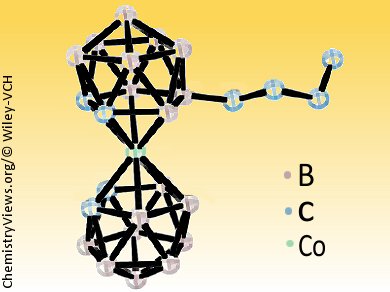The cobaltabisdicarbollide anion [3,3′-Co(1,2-C2B9H11)2]–, [1]–, is the most widely used metallacarborane, equivalent to ferrocene. It has very attractive reversible electrochemistry, high chemical- and physical stability, many possibilities for regioselective substitution, and has applications in devices and functional organic materials, among others.
Francesc Teixidor and colleagues, Institut de Ciència de Materials de Barcelona (ICMAB-CSIC), Spain, have developed a new method to form Bcluster–C bonds in the ferrocene-type anionic metallacarboranes, [1]– (pictured). It is based on a Li+-mediated nucleophilic substitution, which is triggered when passing a threshold of two equivalents of n-BuLi or tBuLi. The attack can take place with pure RLi reagents or with a mix of organolithium reagents. This transition-metal-free method represents a vast improvement in the design and synthesis of cobaltabisdicarbollide derivatives and may open up new applications of Li chemistry.
- Li+-Mediated B–C Cross-Coupling,
D. Olid, C. Viñas, F. Teixidor,
Chem. Eur. J. 2012.
DOI: 10.1002/chem.201201881




